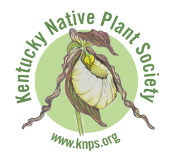Mark your calendars and plan to meet up with other KNPS members and friends as we head to western Kentucky for the Society’s 2023 Fall Meeting, on Oct 28th, at John James Audubon State Park, in Henderson. We will learn about and explore the old growth forests and wetland plant and animal communities in and around John James Audubon State Park and the nearby Sloughs Wildlife Management Area.
We are still in the planning process, but the basic outline is set. There will be a meeting in the morning, from 10am to noon, with talks and updates from KNPS. After lunch there will be walks to look at some of the plants and plant communities that occur at the state park and wildlife management area. All of the talks and walks will be finalized by next month’s Lady Slipper
- Morning session: 10am CDT, in the Audubon Theater in the John James Audubon Museum and Nature Center at John James Audubon SP in Henderson, KY
- 10am – Welcome and KNPS Updates – KNPS Board
- 10:45am – One or more talks on plants native to the area and the special plant communities they are part of.
- 12noon – Lunch on your own. There are no food facilities in the park, so we are recommending that people bring lunch and we can all picnic on the lawns and other park facilities.
- 1pm – 4:00pm – Afternoon Walks – We are still finalizing our walk schedules, but as of right now, the plan is to have two sets of two walks that folks can choose from. Walks will be led by experts who know the plants and birds in and around the park.
- 1pm – 2:15pm – 1) A walk through the old growth forest or 2) a birds and botany walk in the Audubon Wetlands
- 2:30pm – 3:45pm – 1) A walk through the old growth forest or 2) a carpool/caravan to Sloughs WMA for a walk in the wetlands.
The forest along the bluffs of the Ohio River is mature, almost old growth in nature with some trees more than 200 years old. At least 61 species of trees and more than 200 wildflowers have been documented from the site. The north facing, mesic forests are dominated by American beech, sugar maple, and American basswood whereas the more south facing slopes are dominated by sugar maple, various oaks, and tulip tree. At least 169 bird species have been observed in the park.
The 650-acre Audubon Wetlands was added to the park by the Kentucky Heritage Land Conservation fund in 2016. The highlight is a bald eagle nest and heron rookery, as well as habitat for waterfowl and amphibians. The Friends of Audubon, a local nonprofit, has installed a wheelchair accessible boardwalk through the wetlands with plans to install more.
Sloughs WMA consists of a diverse mix of seasonally flooded grain crops and natural “moist soil” vegetation, natural marsh, seasonally flooded bottomland forest, and natural depressions or “sloughs,” that contain flooded stands of bald cypress lined with buttonbush thickets.
Please Let Us Know if You Are Going to Join Us
This event is open to KNPS members and friends alike. There is no cost for the event, but in order to plan effectively, we are requesting that folks pre-register for this event. If you are likely to attend, please fill out the registration form HERE. Thanks, hope to see you there!




























